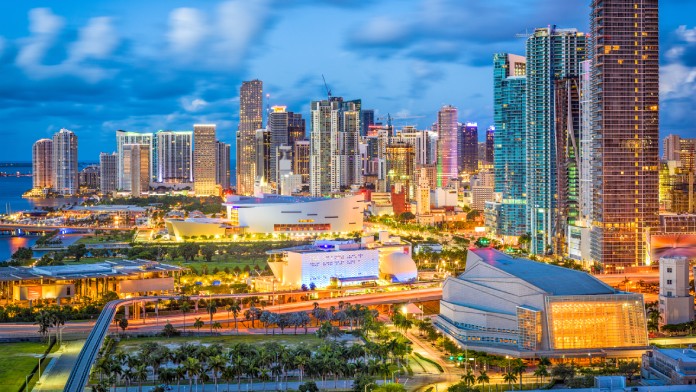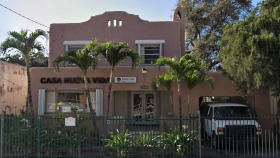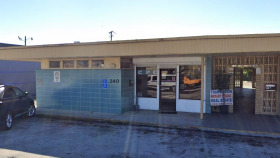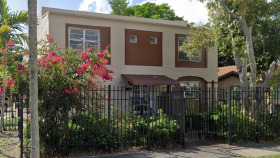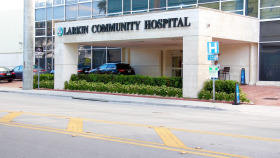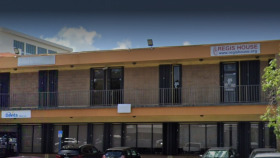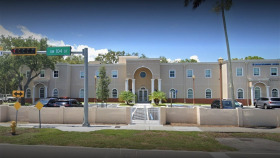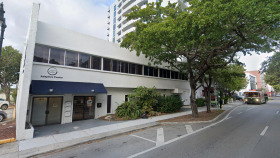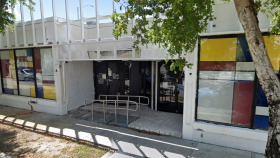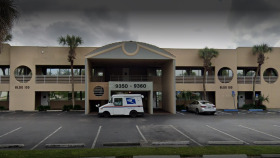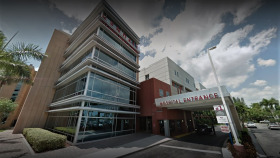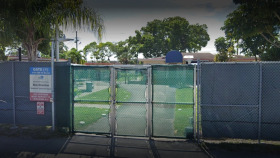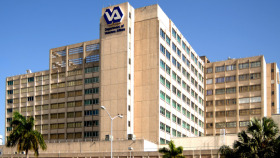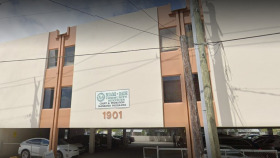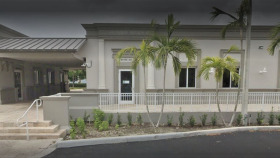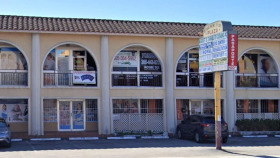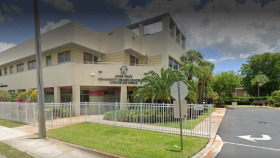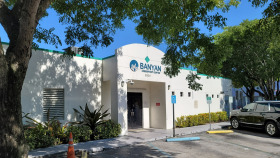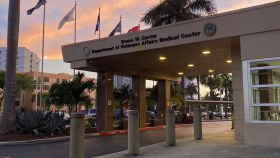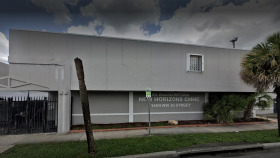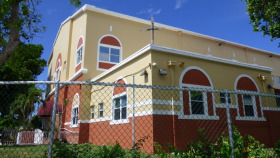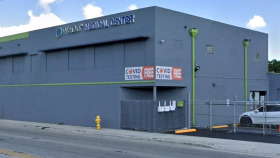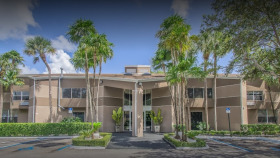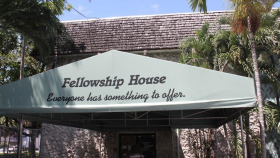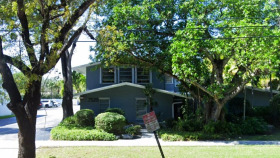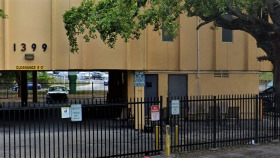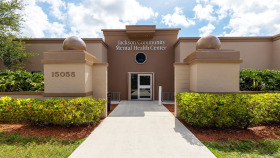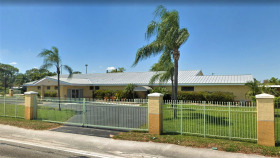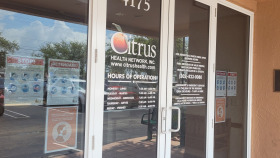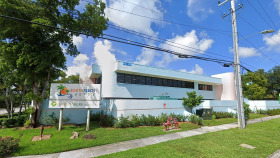Expert Insights
Students from the University of Miami Miller School of Medicine recently won the Representation in Research award from the American Society of Addiction Medicine for their student-led research on the availability of buprenorphine-naloxone (Suboxone) in South Florida’s outpatient pharmacies. Medical students served as staff members for a clinic run by the Miller School with a focus on providing medical care for ID drug users. And it was through that experience that Miller School medical students Maria Rodriguez and Alina Syros learned that FDA-approved medications for opioid use disorder can dramatically reduce the mortality rates of those who are dependent on opioids like fentanyl, heroin, or oxycodone. Despite the life-saving possibilities, locals still face enormous barriers to treatment, which prompted the students to advocate for proper access to buprenorphine. They interviewed 200 randomly selected pharmacies in the area, with the majority being large national chains. When the data was finalized, the students found that 62% of pharmacies had no buprenorphine available. Rodriguez and Syros say the next step is to use their findings to make meaningful change at the local pharmacy level to bridge the gaps in treating opioid addiction.
~ Rita Milios
How Does Miami Compare in Alcohol and Drug Use?
Miami, Florida is one of the major entry points for illegal drugs into the United States. Unfortunately, this also makes Miami one of the nation’s addiction hotspots.
Like the rest of the nation, Miami is facing issues with opioid addiction, fatal opioid-related overdoses, increased strain on their healthcare system, and overall higher drug abuse rates. In fact, from January 2021 to June 2021, Miami saw 166 fentanyl-related deaths. Thankfully, there are a total of 65 accredited alcohol and drug rehabs in Miami offering both inpatient and outpatient treatment options.
The 2020 Community Health Needs Assessment surveyed Miami residents about their health, including the consumption of alcohol and other substances, to identify areas that need the most help. The survey revealed that close to 32% of Miami residents were impacted by substance abuse or substance use disorders. Below are more findings from the survey:
- 9% used illicit drugs in the month before the survey.
- 8% used prescription opioids in the year before the survey.
- 6% of accidental drug overdose deaths.
- 8% participated in binge drinking.
- 1% have sought Miami drug rehabs or Miami alcohol rehabs.
- 9% have been negatively affected by alcohol or drug abuse.
Nearly half of respondents claim alcohol misuse is the most significant concern. The number of binge drinkers is higher in Florida, which has 15.8% binge drinkers, and in the United States overall, with 23.6% binge drinkers.
Overdose Deaths in Miami
More than 7,000 deaths in Florida involved the misuse of prescription or illicit drugs. Below are the 2020 findings on the specific deaths in Miami.
Fentanyl
In 2020, there were 301 overdose deaths involving fentanyl and 33 overdose deaths involving fentanyl plus other substances. Further investigation found age variations in deaths explicitly caused by fentanyl, including:
- One death under the age of 18
- 38 deaths between 18 and 25
- 71 deaths between 26 and 34
- 104 deaths between 35 and 50
- 87 deaths over 50
Heroin
Heroin by itself resulted in 42 drug overdose deaths in 2020. However, when combined with other substances, it led to 2 deaths. For some, heroin was the leading cause of death, and for others, another substance caused the death. Age differences among overdose deaths specifically caused by heroin include:
- Three deaths between 18 and 25
- 11 deaths between 26 and 34
- 18 deaths between 35 and 50
- Nine deaths over 50
Methamphetamine
Methamphetamine resulted in 66 deaths in Miami in 2020. Of those, it was the specific cause of death for 36 individuals. In the remaining 30, it was present, along with other substances. The breakdown of age groups of those in which methamphetamine caused the fatality include:
- One death between 18 and 25
- 11 deaths between 26 and 34
- 16 deaths between 35 and 50
- Eight deaths over 50
Benzodiazepines
Benzodiazepines such as alprazolam and clonazepam were involved in 297 deaths in Miami, with 113 caused by the drug itself and 184 deaths in which benzodiazepines were mixed with other substances. The findings for both drugs reveal every age range is affected by benzodiazepines. The following numbers reflect direct deaths from the drug:
- One death under the age of 18
- 22 deaths between 18 and 25
- 35 deaths between 26 and 34
- 30 deaths between 35 and 50
- 25 deaths over 50
Cocaine misuse was the leader in causing fatalities to people in Miami. In 2020, 449 deaths involved cocaine, with 285 being a direct result of cocaine and 164 deaths due to the mixture of cocaine and other drugs. Of those who died with the main cause as cocaine:
- 23 deaths were between ages 18 and 25.
- 45 deaths were between ages 26 and 34.
- 97 deaths were between ages 35 and 50.
- 120 deaths were over age 50.
Alcohol
In Dade County, 18% of adults binge drink or report drinking excessively. Of this percentage, 24.6% are men, and 11.9% are women. Other relevant statistics regarding alcohol binging and heavy drinking include the following:
- 22% are Caucasians.
- 15% are African Americans.
- 9% are Hispanic.
- 7% are between 18 and 44.
- 6% are between 45 and 65.
- 3% are over 65.
Substance Abuse Among Miami Youth
The 2020 Florida Youth Substance Abuse Survey is a wake-up call for changes that need to be made among teens and adolescents. The survey was given to middle and high school students in Miami Dade county. Students were questioned on their misuse of alcohol and other substances thirty days before the survey. Below are some of the alarming results:
- 17% misused alcohol.
- 6% reported binge drinking.
- 1% vaped nicotine, and 8% vaped marijuana.
- 3% smoked marijuana.
- 2% used inhalants.
- 20% ride with a driver who has smoked marijuana.
- 10% drive while high on marijuana.
Smaller than 1% engaged in cocaine, amphetamines, prescription drugs, club drugs, etc. Out of the middle and high school students reporting alcohol misuse:
- 14% admitted to drinking until they experienced a blackout
- 15% admitted to riding with someone who was drinking
- 3% admitted to driving while drinking
Miami, Florida Alcohol and Drug Laws
Florida policy makers have enacted the following laws related to substance misuse and overdoses:
Florida’s Marchman Act: In 1993, the Marchman Act (Florida’s Substance Abuse Impairment Act) combined legislation, service provider licensure, and client rights regarding substance use disorders and alcohol use disorders into a single piece of legislation. The act:
- Ensures persons with SUD or AUD maintain their dignity and confidentiality when seeking treatment.
- Establishes protocols for inpatient and outpatient therapies, including detox.
- Details methods for Florida residents to be admitted involuntarily to rehab, including through drug courts.
- Clarifies parental rights for admitting youth into Florida rehabs.
Juvenile Possession Laws: Florida laws distinguish types and amounts of drugs to deem possession of each substance as a simple misdemeanor or felony/intent to sell.
- Cocaine: Possession of any amount is a third-degree felony. Possession of 28 grams or more is a first-degree felony.
- Prescription drugs: Possession without a valid prescription is a third-degree felony, punishable by up to 5 years in prison and a fine of up to $5,000.
- Heroin: Possession of less than 10 grams is a third-degree felony, punishable by up to 5 years in prison, a $5,000 fine, driver’s license suspension, and a permanent criminal record. Possession of more than 10 grams can result in up to 30 years in prison, a $10,000 fine, and revocation of driver’s license for 2 years.
- MDMA/Ecstasy: Possession of less than 10 grams is a third-degree felony, punishable by up to 5 years in prison and a $5,000 fine. Possession of 10 grams or more is considered trafficking, which carries a mandatory minimum prison term of 3 years, and a max of 30.
- Meth: Possession of less than 14 grams is a third-degree felony. Possession of more than 14 grams is considered trafficking and has a minimum mandatory prison sentence.
Florida Good Samaritan Law: This law protects Florida residents who seek or receive emergency medical assistance during a suspected overdose. It is meant to save lives by removing fear of arrest or prosecution for:
- Possession or use of a controlled substance
- Possession or use of drug paraphernalia
- Providing alcohol to minors
DUI Law: Florida law prohibits driving under the influence of alcoholic beverages, controlled substances, or chemical substances, which is indicated by a BAC of .08 or above. Penalties for a first DUI offense include a fine of between $500 and $1,000 and, if BAC is .15 or higher or there was a minor in the vehicle, a fine of between $1,000 and $2,000.
Resources
- University of Miami Health System and Jackson Health System. (2021). 2020 Community Health Needs Assessment Miami-Dade County, Florida.
- Florida Department of Law Enforcement. (2022). Medical Examiners Commission 2020 Annual Report.
- Florida Department of Health. (2022). Adults Who Engage in Heavy or Binge Drinking.
- Miami Dade County. (2022). Substance Abuse Treatment Programs.
- Preuss, U. W., Schaefer, M., Born, C., & Grunze, H. (2021). Bipolar Disorder and Comorbid Use of Illicit Substances. Medicina, 57(11), 1256.

